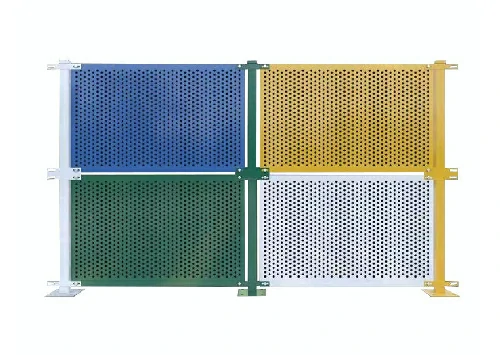Understanding the Costs of Temporary Pool Fencing
When it comes to ensuring the safety of pools, especially for families with young children or pets, temporary pool fencing serves as an essential barrier. It provides an effective way to keep unsupervised individuals away from the pool area. However, many homeowners and property managers often find themselves questioning the costs associated with installing temporary pool fencing. This article delves into the factors influencing these costs, the types of materials available, and the benefits they offer.
Factors Affecting Temporary Pool Fencing Costs
1. Material Type The material chosen for the temporary pool fence significantly influences its price. Common materials include mesh, aluminum, wood, and PVC. Mesh fencing is typically the most cost-effective option, known for its durability and transparency, allowing visibility while maintaining security. Aluminum fences tend to be more expensive but are highly durable and often come in decorative styles. Wooden fences can also add aesthetic value though they may require more maintenance and higher initial costs.
2. Height and Design The height of the fence affects cost as well. Standard temporary pool fences are often between 4 to 5 feet high. Increasing the height for added security can raise costs. Additionally, custom designs or colors often come at a premium. If a homeowner desires a more visually appealing option, they may opt for decorative fencing, which can significantly increase the overall expenditure.
3. Installation Fees The complexity of installation can impact overall costs. Simple mesh fences can often be installed by the homeowner, saving on labor costs. However, if a more intricate design or material is chosen, hiring a professional installer may be necessary, which can add significant fees to the project.
4. Length of Fence The total perimeter that needs to be fenced is a critical factor in cost estimation. More extensive pool areas require longer fencing, which directly increases the material and labor costs. Therefore, it is important to measure the area requiring fencing accurately and plan accordingly to manage expenditures effectively.
temporary pool fencing cost

5. Permit and Regulations Different local governments may have regulations regarding temporary pool fencing, which can include obtaining permits or adhering to safety standards. It is essential to consider potential costs associated with compliance with these regulations.
Benefits of Temporary Pool Fencing
Despite the investment, the benefits of temporary pool fencing considerably outweigh the costs. First and foremost, they provide peace of mind for parents and guardians, knowing that their children or pets are safer from accidental drownings. Secondly, temporary fencing can also be advantageous for landlords or property managers, ensuring compliance with safety regulations which can protect against legal liabilities.
Furthermore, temporary pool fences are often adjustable and can be taken down or repositioned easily, making them versatile for seasonal use or events. For homeowners who may wish to remove the fence during certain times of the year, temporary fencing presents an ideal solution.
Conclusion
In conclusion, while there are various costs associated with temporary pool fencing, they are a worthwhile investment for ensuring safety. Homeowners should consider material types, design choices, installation options, and local regulations to get an accurate estimate that fits their budget. Ultimately, the peace of mind and enhanced safety that comes with proper pool fencing makes it an essential aspect of pool ownership. Whether for a family home, rental property, or community pool, understanding and budgeting for temporary pool fencing can lead to more secure and enjoyable swimming experiences for all.
-
Steel Walkway Grating Prices Explained: Essential Insights for Industry and Infrastructure
NewsNov.24,2025
-
Comprehensive Guide to Steel Grating Price and Its Global Impact
NewsNov.24,2025
-
Understanding Heavy Duty Steel Grating Price: Global Insights & Industry Trends
NewsNov.23,2025
-
Essential Guide to Wire Mesh Grating: Uses, Benefits & Innovations
NewsNov.23,2025
-
Welded Steel Bar Grating: Durable Solutions for Industrial Walkways & Infrastructure
NewsNov.22,2025
-
Wedge Wire Drain Solutions: Durable, Efficient Water Filtration and Drainage
NewsNov.22,2025
Subscribe now!
Stay up to date with the latest on Fry Steeland industry news.

